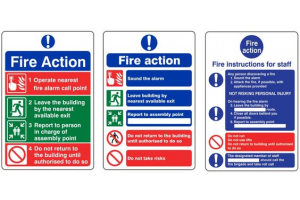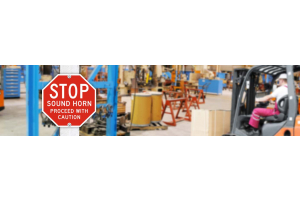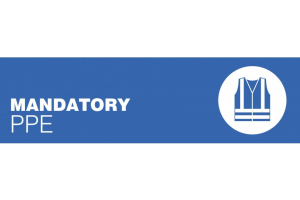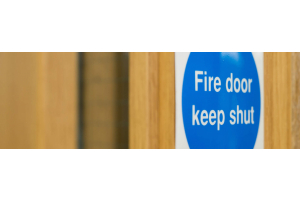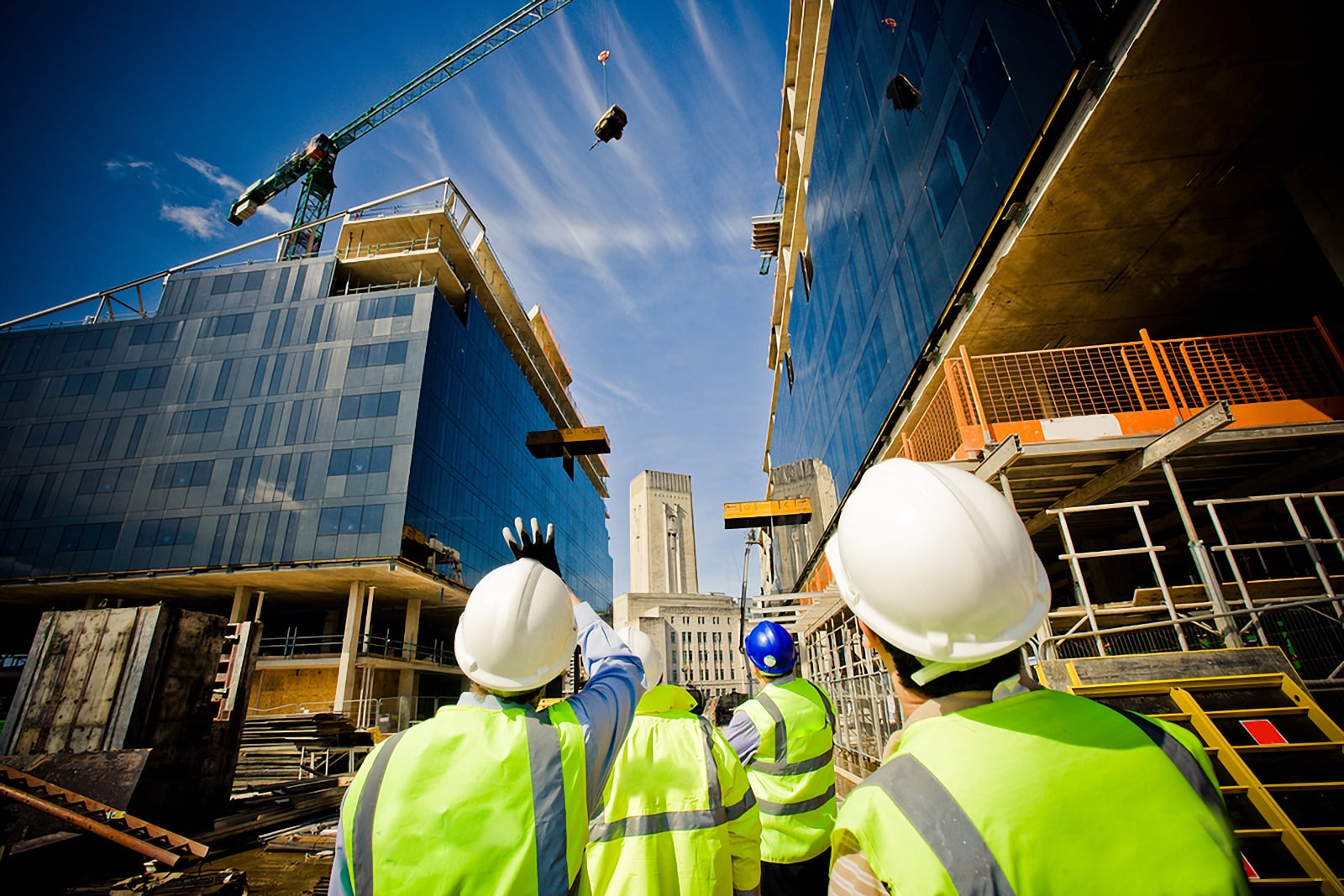
Moving goods safely on building sites
Many construction workers are killed or seriously injured during lifting operations because of accidents such as cranes overturning; material falling from hoists; and slinging failures. Many more suffer long-term injury because they regularly lift or carry items that are heavy or awkward to handle, eg: block layers lifting dense concrete blocks; pavers laying slabs; and labourers lifting and carrying bagged products, such as cement and aggregates. To avoid the risk of injury it is essential that all material handling is properly planned. Where possible, avoid people having to lift materials at all. Where lifting is unavoidable provide mechanical handling aids wherever possible. Make sure that all equipment used for lifting is in good condition and is used by trained and competent workers.
Plan for material handling: before the job starts, decide what sort of material handling is going to take place and what equipment will be needed; avoid double handling – it increases risks and is inefficient; make sure that any equipment is delivered to the site in good time and that the site has been prepared for it. Materials and products should, where possible, be delivered in a form that can easily be moved around the site with minimal manual handling, eg palletised loads that can be moved by fork-lift truck; ensure the equipment is set up and operated only by trained and experienced workers; co-ordinate site activities so that those involved in lifting operations do not endanger other workers and vice versa; do not stand under loads being lifted; arrange for the equipment to be regularly inspected and thoroughly examined at relevant time periods by a competent person. Make sure reports of through examinations and records of inspections are kept. The Lifting Operations and Lifting Equipment Regulations 199810 give details of what has to be documented.
Manual handling
Lifting and moving loads manually is one of the most common causes of injury at work. Many manual handling injuries result from repeated operations, but even one bad lift can cause a lifetime of pain and disability. The Manual Handling Operations Regulations 199211 require employers to avoid the need to carry out manual handling which creates a risk of injury. Where avoidance is not reasonably practicable, employers have to make an assessment, reduce the risk of injury as far as reasonably practicable and provide information about the weight of loads. There is no truly ‘safe’ weight limit for manual handling operations. The degree of risk associated with lifting varies according to the nature of the load, the circumstances in which the lift takes place, how often the lifting operation is carried out and the weight of the item that is being lifted
.When manual handling is necessary, prevent injury by: avoiding unnecessary handling; before work starts, identify operations which involve either lifting heavy or awkward loads or repetitive lifting operations. It is essential to find out the weight of heavy items which may have to be manually handled. Find ways of either: avoiding the operation altogether; or using lightweight materials, eg lightweight kerbs are available, which weigh less ––than 10 kg; or using mechanical aids, such as vacuum lifters or grabs for kerbs and paving, positioning loads by machine and planning to reduce the height from which they have to be lifted and the distance over which they have to be carried; setting limits on the size of commonly used products or material, eg not requiring anyone to manually lift building blocks, kerbs or paving weighing more than 20 kg; ordering bagged materials in small, easily handled sizes where possible; most building products are now available in 25 kg bags. Plan difficult manual lifts carefully, particularly if the load is to be shared. Remember, hazards arise when people are not equally matched in terms of size and strength and if they have not been trained to undertake multiple person lifts; training workers in safe lifting techniques and sensible handling of loads.
Handling kerbs using a vacuum lifter; Manual handling injuries occurring at work may need to be reported to HSE under the Reporting of Injuries, Diseases and Dangerous Occurrences Regulations 19957 and anyone injuring their back at work should get early medical attention and return only gradually to handling duties. Gin wheels provide a convenient way of raising tools and light loads manually. Though simple pieces of equipment, care is needed when assembling and using them if accidents are to be avoided. If a gin wheel or similar is to be used, make sure it has: been securely fixed to a secure anchorage, to prevent displacement; a proper hook designed to prevent load displacement or a hook fitted with a safety catch. The safety catch will retain the load in case it snags. Do not use bent reinforcing rods or other makeshift hooks; a safe working platform from which the hook can be loaded and unloaded; and been clearly marked with a working load limit.
Hoists of various types are widely used on construction sites and include goods and passenger hoists, inclined hoists and transport platforms. They have become an essential part of almost any construction project providing the facility for the smooth and rapid movement of workers and materials. Hoists must be: properly constructed of sound materials and capable of lifting the required loads; properly marked as to use either for equipment and materials only, or for passengers in addition to goods, and the number that can be carried, together with a safe working load notice. Never allow passengers to ride on a goods-only hoist; erected only by trained and experienced people following the manufacturer’s instructions and properly secured to the supporting structure; operated only by trained and competent people; thoroughly examined and tested after erection, substantial alteration or repair and at relevant intervals. Regular checks should be carried out and the results recorded. As a general guide, weekly checks should suffice.
Set the controls up: so that the hoist can be operated from one position only, eg ground level; and the operator can see all the landing levels from the operating position. To prevent people being struck by the platform or other moving parts: enclose the hoistway at places where people might be struck, eg working platforms or window openings; and provide gates at all landings and at ground level. Prevent people falling down the hoistway by making sure: the hoistway is fenced where people could fall down it; the gates at landings are kept closed except during loading and unloading. Gates should be secure and not free to swing into the hoistway; and the edge of the hoist platform is close to the edge of the landing so that there is no gap to fall through. Prevent people being hit by falling materials by: stopping loads falling from the platform, eg make sure wheelbarrows are securely chocked and are not overfilled and that loads are evenly distributed on the hoist platform; not carrying loose loads such as bricks. Put loose loads in proper containers or use a hoist with an enclosed platform; not overloading the platform. It should be clearly marked with its working load limit; and enclosing the hoistway.
Mobile cranes
All construction jobs are likely to involve lifting operations, even if it is only the use of a lorry loader to deliver materials to site. Lifting operations can be hazardous activities if they are not properly planned and carried out safely. The term ‘mobile crane’ includes any crane capable of travelling under its own power. Mobile cranes provide a versatile, reliable means of lifting on site. However, it is easy to become complacent about their safe use and complacency can lead to serious accidents. Safe lifting depends on three key elements, which require that the operation must be: properly planned by a competent person (also known as the ‘appointed person’); appropriately supervised (by a competent ‘crane supervisor’); and carried out in a safe manner. No lift is small enough to be left to chance. Every lift should be planned and carried out by trained, competent people. If no one has the expertise, contract out the work to someone who does. If a lift is going to be carried out, accidents can be avoided by appointing someone (not the crane operator) with the expertise to take charge and control the lifting operation.
The degree of planning and preparation will depend upon the complexity of the lifting operation to be undertaken. The first step in any operation should be to identify the risks involved by carrying out a risk assessment. The next step is to draw up a plan to show how the risks will be eliminated or controlled. Only the appointed person should plan the lifting operation. The appointed person must be competent in planning lifting operations as well as possessing adequate practical and theoretical knowledge and experience of lifting operations. The outcome of the planning process should be a comprehensive and clear method statement or lift plan.
Planning for a safe lifting operation will include: selecting the right crane for the job. It will need to be: able to lift the heaviest load at the required radius with capacity to spare. ––The maximum load a crane can lift decreases the further the load is from the crane, so a crane rated at 20 tonnes may be needed to lift a one tonne load; able to get on and off the site, be assembled if required and operate within ––the confines of the site; positioning the crane in a safe place, so that: the crane operator has a clear view;––it is well away from overhead power lines, excavations and railway lines;––it is on level ground that can take its full weight and its load (timber packing ––may be needed).
Check there are no voids such as drains or basements which could collapse suddenly and that ground conditions have not been affected by the weather; making sure a rated capacity indicator (automatic safe load indicator) is fitted (when the crane is able to lift more than one tonne) and is in good working order; selecting the most suitable lifting accessories (eg chains, slings, wire rope, hooks, spreader beams etc) and method of slinging (choker sling, double wrap, cradle sling etc) relative to the weight, shape, centre of gravity, lifting points and load stability; checking that the crane and any lifting accessories have a current thorough examination report; making sure the crane supervisor, crane operator, slinger and signaller are trained and experienced by asking for evidence to be produced. Supervising the lift. Every lifting operation must be appropriately supervised to ensure that the lift plan is distributed, understood and followed and that the work is being carried out safely. The supervision required should be proportionate to the risk and the level of experience of the personnel involved. The supervisor should be someone other than the crane operator. Supervisors should have received sufficient training and be competent to supervise the operation. A supervisor should: direct and supervise the work; be fully briefed on the safe system of work described in the lift plan; be able to identify any problems either arising from changed site conditions or ccurring while the lifting operation is in progress and have the authority to stop the operation until guidance can be provided by the person who planned the lift; and be capable of giving clear, unambiguous instructions to all the members of the team.
Lifting operations should be carried out following the lift plan under the supervision of a competent person, who controls the team (crane operator, slinger, signaler etc) and who can stop the lift at any time should they consider the lift to be unsafe. When carrying out any lift make sure: all those involved in the lift know their role and understand who is in control of the operation; load routes are established to avoid loads being lifted over people; the load is properly slung by a competent person. Ensure the chains and slings are of the correct strength and are in good condition. Chains and slings may be damaged by the load, so packing could be necessary. The centre of gravity of the load may not be in the middle of the load (this is very common with pieces of plant), causing it to shift or slip out of its slings when it is raised. It is important that loads are slung so that they are in balance with their centre of gravity beneath the hook a competent banksman or signaller is provided if the driver’s view is restricted; there is adequate clearance so that people are not struck or trapped by the load, counterweight or body of the crane. If traps are unavoidable, fence them off; where necessary, tag lines are used to guide loads, eg in windy conditions or on large loads; if the site team cannot complete the lift as planned, the appointed person must be consulted before the plan is changed.
The main difference between crane hire and a contract lift is who takes the responsibility for the three key elements. In other words, who will plan, supervise and be responsible for the lifting operation. With a contract lift, the crane hire company will plan and supervise the lifting operation and will be responsible for ensuring it is carried out in a safe manner. With crane hire, the crane operator works to your instructions and you are responsible for writing the lift plan, supervising the lift and ensuring it is carried out in a safe manner. Before selecting crane hire, ask yourself the following questions: Will the lift be properly planned by a competent appointed person, and what are their credentials? Who will supervise the lifting operation for you? (This will be a competent person provided by you and will not be undertaken by the crane operator.) Have you carried out a risk assessment and prepared a written plan containing the information and any other relevant information? Can you confirm that the lift plan will be discussed with the crane driver before the lifting operation commences? If you are unsure of what is required then you should speak to the crane hire company about a contract lift. For further information see Safe use of lifting equipment. Lifting Operations and Lifting Equipment Regulations 1998. Approved Code of Practice and guidance.
